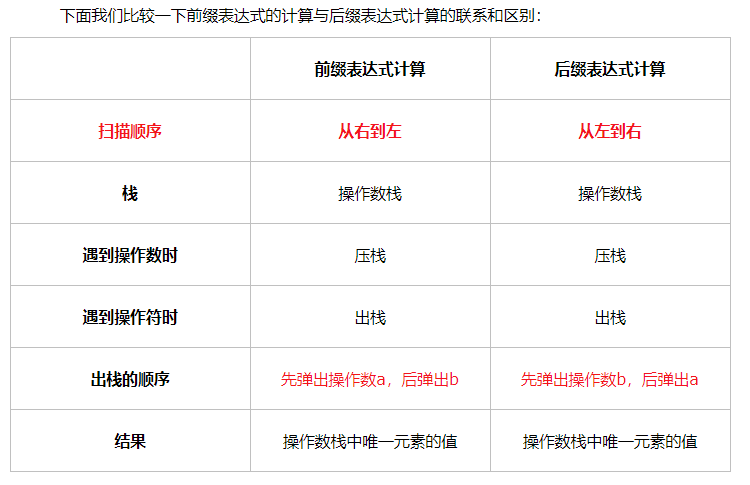表达式树
表达式树生成代码(源自紫书):

#pragma GCC optimize(2) #include <bits/stdc++.h> using namespace std; typedef long long ll; const int maxn = 1e5 + 100; const int maxm = 1e6 + 100; const int inf = 0x3f3f3f3f; //1061109567 //结点左右编号和字符 int lch[maxn], rch[maxn]; char op[maxn]; int nc; // 结点数 //表达式树的每一个非叶结点都代表了运算符, //每一棵子树都是一条运算式 //表达式树中序遍历就是最开始的表达式 //后序遍历就是后缀表达式 //先序遍历就是前缀表达式 int build_tree(char * s, int x, int y) { int i, c1 = -1, c2 = -1, p = 0; int u; if (y - x == 1) { //仅一个字符,建立单独节点 u = ++ nc; lch[u] = rch[u] = 0; op [u] = s[x]; return u; } for (int i = x; i < y; ++ i) { switch (s[i]) { case '(': p ++; break; case ')': p --; break; case '+': case '-': if(!p) c1=i; break; case '*': case '/': if(!p) c2=i; break; } } if (c1 < 0) c1 = c2; //找不到括号外的加减号就用乘除号。 if (c1 < 0) return build_tree(s, x+1, y-1); u = ++nc; lch[u] = build_tree(s, x, c1); rch[u] = build_tree(s, c1+1, y); op[u] = s[c1]; return u; } int main() { cin.tie(0); ios::sync_with_stdio(0); char s[100]; scanf("%s", s); build_tree(s, 0, strlen(s)); return 0; }
关于表达式求值(引自OI Wiki):
我个人更喜欢非递归方式求值。
非递归的方法是定义两个 栈 来分别存储运算符和运算数。每当遇到一个数直接放进数的栈;每当遇到一个操作符时,要查找之前运算符栈中的元素,按照预先定义好的优先级来进行适当的弹出操作(弹出的同时求出对应的子表达式的值)。
我们要知道:算术表达式分为三种,分别是前缀表达式、中缀表达式、后缀表达式。
其中,中缀表达式是我们日常生活中最常用的表达式;后缀表达式是计算机最容易理解的表达式。
为什么说后缀表达式最容易被计算机理解呢?因为后缀表达式不需要括号表示,它的运算顺序是唯一确定的。
举个例子:在后缀表达式 32 * 1 - 中,首先计算 3 X 2 = 6 (使用最后一个运算符,即栈顶运算符),然后计算 6 - 1 = 5。
可以看到:对于一个后缀表达式,只需要 维护一个数字栈,每次遇到一个运算符,就取出两个栈顶元素,将运算结果重新压入栈中 。
最后,栈中唯一一个元素就是改后缀表达式的运算结果时间复杂度 O(n)。
所以说,对于普通中缀表达式的计算,我们可以将其转化为后缀表达式再进行计算。转换方法也十分简单。只要建立一个用于存放运算符的栈,扫描该中缀表达式:
- 如果遇到数字,直接将该数字输出到后缀表达式(以下部分用「输出」表示输出到后缀表达式);
- 如果遇到左括号,入栈;
- 如果遇到右括号,不断输出栈顶元素,直至遇到左括号(左括号出栈,但不输出);
- 如果遇到其他运算符,不断去除所有运算优先级大于等于当前运算符的运算符,输出。最后,新的符号入栈;
- 把栈中剩下的符号依次输出,表达式转换结束。
时间复杂度O(n)。

顺便放一个嫖来的代码(Uva12219):

#define _CRT_SECURE_NO_WARNINGS #include<iostream> #include<algorithm> #include<string> #include<sstream> #include<set> #include<vector> #include<stack> #include<map> #include<queue> #include<deque> #include<cstdlib> #include<cstdio> #include<cstring> #include<cmath> #include<ctime> #include<functional> using namespace std; const int mx = 60000; int T, rnd, cnt; char expr[mx * 5], *p; int done[mx]; struct Node { string s; int ha, left, right; bool operator < (const Node&b)const//由于下面要用到map::count函数,所以必须要重载小于号 { if (ha != b.ha)return ha < b.ha; if (left != b.left)return left < b.left;//哈希相同则比较出现的顺序 return right < b.right; } }node[mx]; map <Node, int>dict;//记录子树的编号 int solve() { int id = cnt++;//从0开始编号 Node&u = node[id]; u.left = u.right = -1; u.s = ""; u.ha = 0; while (isalpha(*p)) { u.ha = u.ha * 27 + *p - 'a' + 1;//可以理解为27进制,a到z的编号为1到26 u.s.push_back(*p);//将该子树的字母放入s p++;//向后扫描,遇到括号停止 } if (*p == '(')//(L,R),递归处理左右子树 { p++;//先跳过'(' u.left = solve(), p++;//返回左子树编号,并跳过',' u.right = solve(),p++;//返回右子树编号,并跳过')' } if (dict.count(u)) { cnt--;//子树出现过,个数减少1 return dict[u];//返回这颗子树的编号 } return dict[u] = id;//如果这棵树是首次出现,给它编号 } void print(int v) { if (done[v] == rnd)printf("%d", v + 1);//已经输出过了,输出序号即可 else { done[v] = rnd;//不需要对done数组初始化,只需要用这一轮特有的rnd标记即可 printf("%s", node[v].s.c_str());//输出树根的字母 if (node[v].left != -1)//含有左右子树 { putchar('('); print(node[v].left);//递归输出左右子树 putchar(','); print(node[v].right); putchar(')'); } } } int main() { freopen("test.txt", "r", stdin); scanf("%d", &T); for (rnd = 1; rnd <= T;rnd++) { dict.clear(); cnt = 0; scanf("%s", expr); p = expr;//用指针p扫描expr print(solve()); putchar(10);//打印换行符 } return 0; }



 浙公网安备 33010602011771号
浙公网安备 33010602011771号